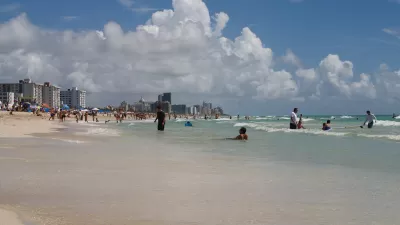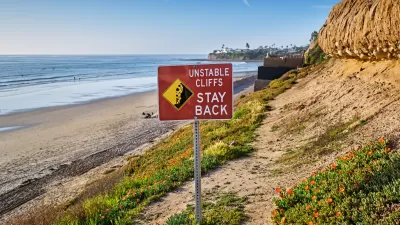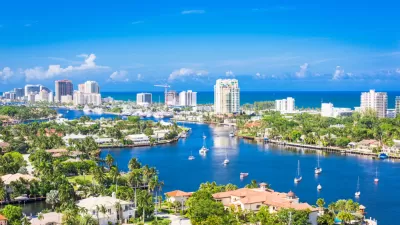How did the seven square mile, four-foot high barrier island in the Atlantic Ocean off Miami and Biscayne Bay hold-up to Hurricane Irma? The city arguably has done more to adapt to sea level rise in recent times than any other coastal city.

A post on September 14, largely written prior to Irma's first landfall on Sept. 10 on Cudjoe Key, part of the barrier reef islands known as the Florida Keys, and second landfall later that day on Marco Island, also a barrier island, in the Gulf of Mexico in southwest Florida, strongly suggested that barrier islands were best left undeveloped:
Barrier islands serve a critically important ecological purpose by preventing ocean swells and other storm events from disrupting water systems on their mainland sides, protecting the coastline.
"As the first line of defense during storms that threaten coastal communities, barrier islands are very important for reducing the devastating effects of wind and waves and for absorbing storm energy," according to the National Oceanic and Atmospheric Administration (NOAA) of the U.S. Department of Commerce.
Miami Beach dodged a bullet, or in the words of Mayor Phillip Levine on CNN on Sept. 11, "dodged a cannon," when Hurricane Irma veered westward, sparing southeast Florida a direct hit as had initially been forecasted on Sept. 8, it still endured flooding along with much of Miami-Dade County.
As initially posted, Miami Beach has been preparing for sea level rise, flooding, and storm surge for several years.
After he took office, in November of 2013, Levine fast-tracked a program to install electric pumps along Alton Road and other prime flooding spots on the city’s west side so that, during a storm surge or high tide, the pumps can be switched on, suctioning water off the streets and out into Biscayne Bay
In a conversation with CNN's Wolf Blitzer on Sept. 11, he tells how the adaptations fared:
And what we found is that during this historic high tide that we experienced with this tidal surge, all those areas that we improved were absolutely dry.
So for us, we are very excited. It was a success. But once again, you never declare victory against mother nature.
Levine adds that he believes Miami Beach is "a model for other cities" and serves as a reminder that investment is needed "in coastal cities to make them resilient because these weather events...are the new normal."
FULL STORY: Miami Beach: Model for Coastal Cities Adapting to Climate Change?

Maui's Vacation Rental Debate Turns Ugly
Verbal attacks, misinformation campaigns and fistfights plague a high-stakes debate to convert thousands of vacation rentals into long-term housing.

Planetizen Federal Action Tracker
A weekly monitor of how Trump’s orders and actions are impacting planners and planning in America.

In Urban Planning, AI Prompting Could be the New Design Thinking
Creativity has long been key to great urban design. What if we see AI as our new creative partner?

King County Supportive Housing Program Offers Hope for Unhoused Residents
The county is taking a ‘Housing First’ approach that prioritizes getting people into housing, then offering wraparound supportive services.

Researchers Use AI to Get Clearer Picture of US Housing
Analysts are using artificial intelligence to supercharge their research by allowing them to comb through data faster. Though these AI tools can be error prone, they save time and housing researchers are optimistic about the future.

Making Shared Micromobility More Inclusive
Cities and shared mobility system operators can do more to include people with disabilities in planning and operations, per a new report.
Urban Design for Planners 1: Software Tools
This six-course series explores essential urban design concepts using open source software and equips planners with the tools they need to participate fully in the urban design process.
Planning for Universal Design
Learn the tools for implementing Universal Design in planning regulations.
planning NEXT
Appalachian Highlands Housing Partners
Mpact (founded as Rail~Volution)
City of Camden Redevelopment Agency
City of Astoria
City of Portland
City of Laramie





























